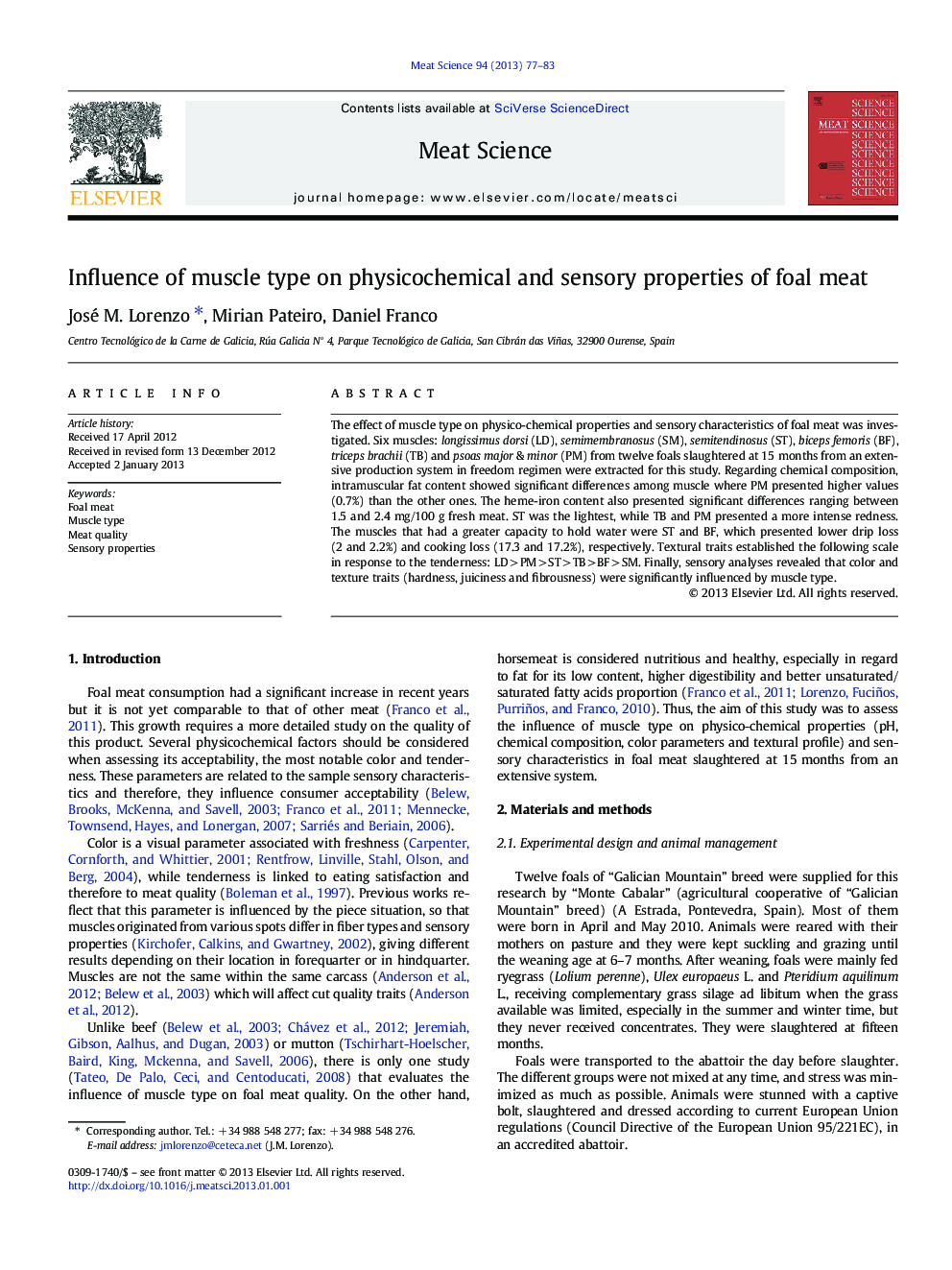| Article ID | Journal | Published Year | Pages | File Type |
|---|---|---|---|---|
| 5792386 | Meat Science | 2013 | 7 Pages |
The effect of muscle type on physico-chemical properties and sensory characteristics of foal meat was investigated. Six muscles: longissimus dorsi (LD), semimembranosus (SM), semitendinosus (ST), biceps femoris (BF), triceps brachii (TB) and psoas major & minor (PM) from twelve foals slaughtered at 15Â months from an extensive production system in freedom regimen were extracted for this study. Regarding chemical composition, intramuscular fat content showed significant differences among muscle where PM presented higher values (0.7%) than the other ones. The heme-iron content also presented significant differences ranging between 1.5 and 2.4Â mg/100Â g fresh meat. ST was the lightest, while TB and PM presented a more intense redness. The muscles that had a greater capacity to hold water were ST and BF, which presented lower drip loss (2 and 2.2%) and cooking loss (17.3 and 17.2%), respectively. Textural traits established the following scale in response to the tenderness: LDÂ >Â PMÂ >Â STÂ >Â TBÂ >Â BFÂ >Â SM. Finally, sensory analyses revealed that color and texture traits (hardness, juiciness and fibrousness) were significantly influenced by muscle type.
⺠The horse meat production in Spain has increased in the recent years. ⺠Muscle type effect on physico-chemical and sensory characteristics was investigated. ⺠Psoas major muscle showed the highest intramuscular fat content. ⺠Sensory analyses revealed that color and texture traits were influenced by muscle type.
